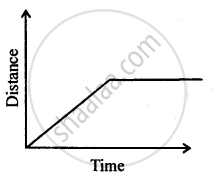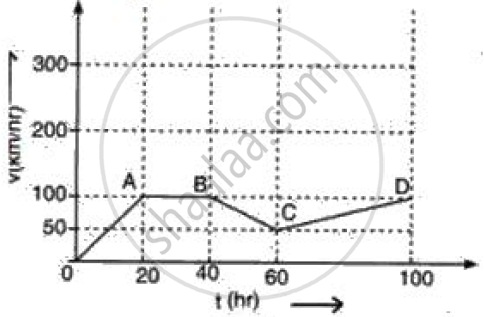Advertisements
Advertisements
प्रश्न
An object covers a distance of S meters in t seconds as follows :
| S (meters) | 0 | 8 | 20 | 20 | 16 | 10 | 0 |
| t (Seconds) | 80 | 2 | 5 | 10 | 12 | 15 | 10 |
Plot a graph, taking t on X-axis and S on Y-axis. Determine the velocity of the object at time
(i) 6 s, and
(ii) 14 s.
उत्तर
The given question is wrong as distance can never DECREASE with the progress of time.
APPEARS IN
संबंधित प्रश्न
What is the difference between distance travelled by a body and its displacement ? Explain with the
help of a diagram.
A body is moving in a straight line and its displacement at various instants of time is given in the following table
| Time (s) | 0 | 1 | 2 | 3 | 4 | 5 | 6 | 7 |
| Displacement (m) | 2 | 6 | 12 | 12 | 12 | 18 | 22 | 24 |
Plot the displacement-time graph and calculate
(i) Total distance travelled in the interval 1 s to 5 s.
(ii) Average velocity in time interval 1 s to 5 s.
Can you suggest the kind of motion of a body from the following distance – time graph?

Define displacement.
Under what condition is the displacement of a body equal to the distance traveled by it?
A body is moving along a circular path of radius r. What will be the distance and displacement of the body when it completes:
Half a revolution
The figure represents graphically the velocity of a car moving along a straight road over a period of 100 hours.
Calculate the distance travelled in the last 40 h.
Which of the following figures represent uniform motion of a moving object correctly?
Give some examples for vector quantity.
Slope of a velocity-time graph gives
